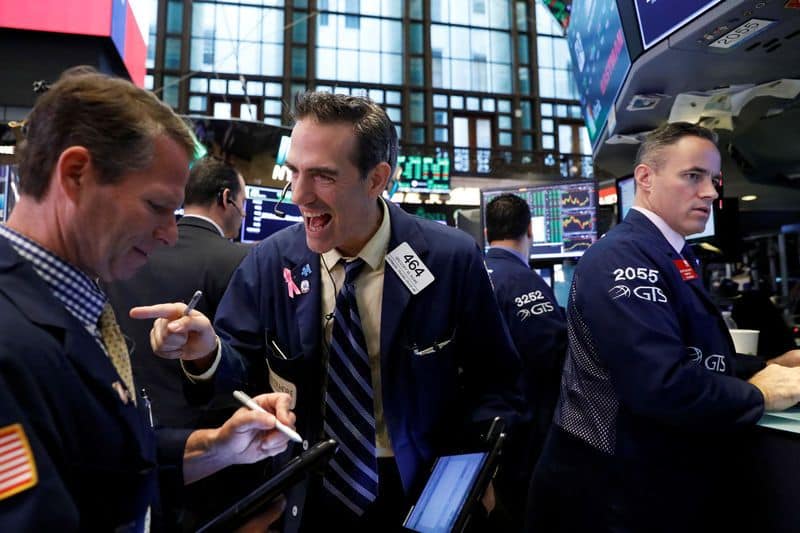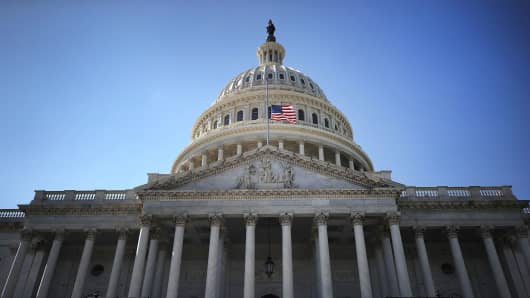There’s an interesting debate going on in the markets now: Has this year’s rally in stocks been all about tax reform and the rest of the Trump trade, or is something bigger at work?
The market is up big this year, so it’s worthwhile to know whether the wind is at investors’ backs or if there’s a gale blowing that could knock the bull off its hooves.
One side argues that it’s really a strong fundamental picture that has lifted the Dow 15.8 percent this year, while the other believes it’s all about the anticipation that another package of goodies could be coming the market’s way now that the Federal Reserve has eased up on its economic stimulus measures.
We could get a better handle on what the answer is as events develop through the week.
Big budget vote
The Senate returns to work this week after a one-week break and is expected to take up the budget resolution passed in committee earlier this month.
Part of that budget includes the White House tax plan, complete with its $1.5 trillion cut and the administration’s hopes to take on historic reform of the nation’s antiquated system.
Credit Suisse analysts last week said the market hasn’t been all about tax cuts, as companies with the highest effective tax rates, and thus those that stand to benefit most, have underperformed those with lower tax rates.
It’s an argument that certainly makes some sense. Still, it’s hard to discount the market’s 24 percent rally since President Donald Trump‘s election as coming coincidentally with a host of other bullish factors.
The market’s all about fear and greed, and the latter seems pretty well in play now. Investors should be watching whether this week’s vote uncorks any fear.
A Fed decision coming
The derby to see who will be leading the Federal Reserve into the future got a lot more interesting last week as Jerome “Jay” Powell seemed to vault into the lead, while outgoing Vice Chairman Stanley Fischer urged Trump to stick with Janet Yellen.
More than two weeks have passed since the president said he would name a new central bank chief in two or three weeks. That would make the decision due by Friday.
In the meantime, we’ll get some more insight from current Fed officials and where they see interest rates specifically and monetary policy in general heading.
The market will hear from Minneapolis Fed President Neel Kashkari on Monday, Philadelphia President Patrick Harker on Tuesday, New York’s Bill Dudley on Wednesday, Cleveland’s Loretta Mester on Thursday, and then (drum roll, please) Yellen herself on Friday. The chair will be speaking to the National Economists Club in Washington and likely will garner plenty of attention.
The economy and earnings
Banks kicked off earnings season in decent fashion, but so far the picture hasn’t been terribly pretty.
With a pretty limited sample size to draw from, S&P 500 companies so far are showing growth of just 2.1 percent, according to FactSet. As recently as Sept. 30, analysts figured the number would be closer to 3 percent.
This week brings a big slate. A few highlights: Netflix reports Monday; Goldman Sachs, Johnson & Johnson, Morgan Stanley and IBM happen Tuesday; Wednesday will see American Express; Thursday’s big one is Verizon and Friday features GE and Procter & Gamble.
On the economic front, highlights will be industrial product on Tuesday, housing starts and the Fed’s Beige Book of regional economic reports on Wednesday, jobless claims and the Philadelphia Fed manufacturing index comes Thursday, and Friday will be existing home sales.
Lots of market movers there.
The last word
An earnings-driven market is what we all really want to see. The bull run of the past eight years has been overly dependent on accommodative monetary policy, which now is being slowly tightened.
Brad McMillan, chief investment officer at Commonwealth Financial Network, brings soothing words this week for those worried that corporate profits might be a letdown:
“I don’t think we need to be worried about earnings, certainly not in the next quarter or two. Right now, trends remain positive and may get even better. Sectors such as energy continue to recover, and insurance will certainly benefit from higher pricing in the aftermath of the storms, to name just two more.
“We always need to watch the fundamentals, of course. For right now? They look pretty good.”



